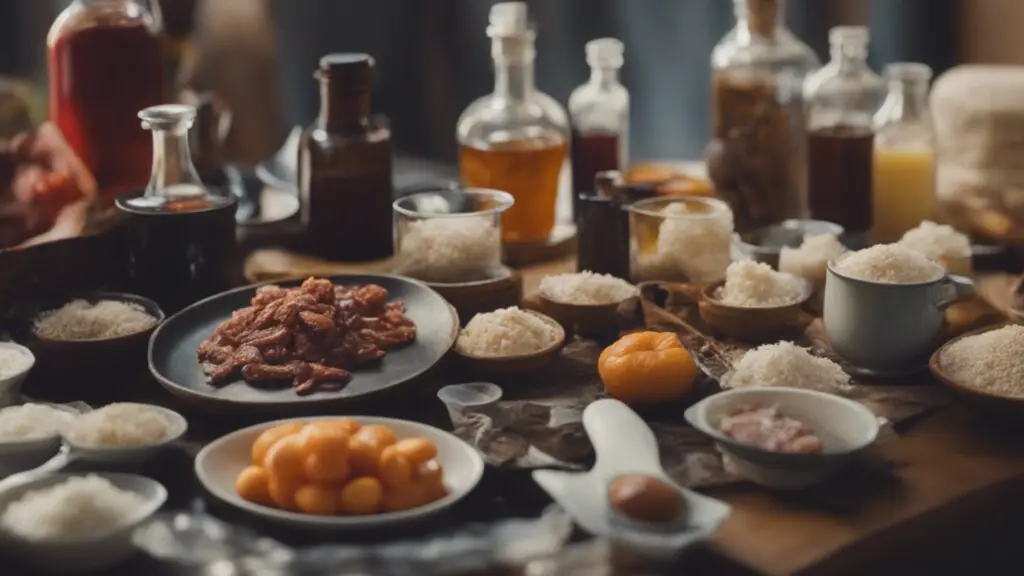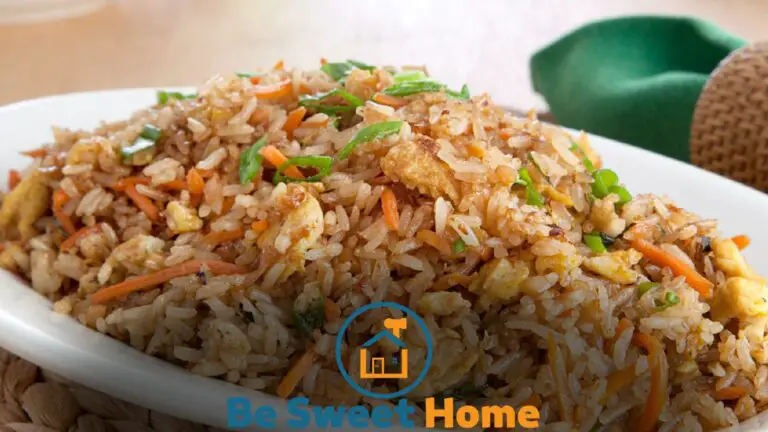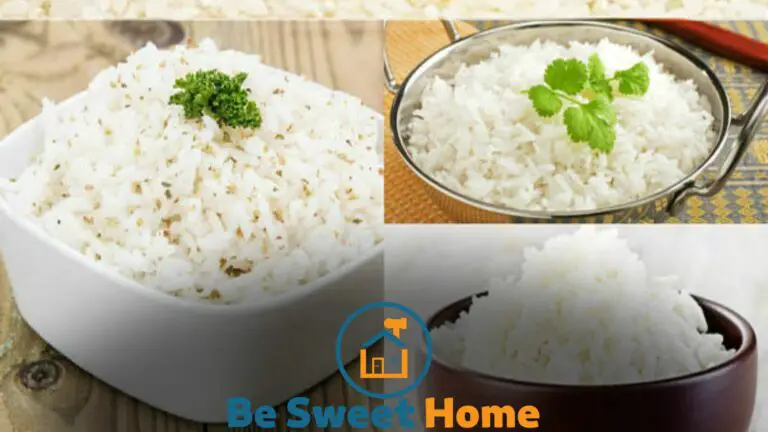

A recipe is a set of instructions for preparing a dish, whereas ingredients are the raw materials used in cooking. A recipe includes ingredients and step-by-step guidance to create a specific meal.
Crafting a great piece about food begins with understanding the essentials: recipes and ingredients.
These terms are fundamental cornerstones in the culinary world, each playing a vital role. Think of a recipe as your road map, guiding you through the cooking journey.
It lists the ingredients you’ll need and shows you how to combine and cook them to achieve gastronomic success.
Whether you’re a seasoned chef or a beginner in the kitchen, knowing the distinct differences helps execute a dish to perfection.
Remember, while ingredients are the building blocks, a recipe is the blueprint that brings your dish to life.
Defining the Essentials: Recipe vs. Ingredients


Imagine baking a cake without a recipe or ingredients. Quite impossible, right? Understanding the roles of a recipe and its ingredients is vital.
So, let’s dive into their differences.
Essential Attributes of a Recipe
A recipe acts as a blueprint for creating culinary masterpieces. It’s more than just a list; it’s the guiding force behind a dish’s success. Highlighting the key attributes:
- Step-by-Step Instructions: Outlines the specific steps to follow.
- Measurements & Proportions: Details exact amounts for consistency.
- Cooking Methods: Describes techniques like baking or frying.
- Equipment Needed: Lists tools for preparing the dish.
- Preparation & Cooking Time: Gives an estimate of the time required.
- Serving Suggestions: Advises on how to present the dish.
Primary Role of Ingredients
Without ingredients, a recipe is a mere idea. The primary role they play is simple but crucial:
- Building Blocks: They form the dish’s foundation.
- Flavor and Aroma: Responsible for taste and smell.
- Nutritional Value: Offer health benefits and energy.
- Texture and Color: Contribute to the dish’s look and feel.
The Blueprint of Culinary arts: a Closer Look at Recipes
Imagine a builder without blueprints or a tailor without patterns. Like these professions, cooking relies on a special kind of blueprint—the recipe.
Recipes are not just lists of ingredients; they are the essence of culinary creations. They tell a story of tastes, aromas, and cultures.
A recipe is a chef’s guiding star and a home cook’s best friend. In cooking, recipes and ingredients combine to create magic in the kitchen.
Recipes as a Guide
Recipes serve as detailed guides for creating dishes. Like a map, they lead cooks through the process.
Think of recipes as a toolkit for success in the kitchen. They provide:
- Ingredients: What you need
- Quantities: How much to use
- Instructions: The steps to follow
- Timing: How long it takes
With recipes, cooks can replicate dishes consistently. Each element plays a key role in the final taste and presentation.
Variations and Adaptations
Recipes are not set in stone. They invite creativity and a personal touch.
Through adaptation and variation, cooks can:
| Change | Result |
|---|---|
| Ingredients | New flavors |
| Quantities | Adjust intensity |
| Cooking time | Alter texture |
Substitutions cater to dietary restrictions and preferences. Experimentation leads to unique dishes.
Understanding the essence of recipes allows cooks to innovate while respecting culinary traditions. Even with changes, the heart of the dish remains.
Ingredients: Building Blocks for Every Dish
The ingredients are the building blocks for every dish. They form the foundation of the culinary arts and the essence of flavor in every recipe.
Understanding the difference between ingredients and recipes is key to mastering cooking.
A recipe is a set of instructions on how to create a dish. Ingredients, on the other hand, are the raw components that compose the recipe.
They are essential to craft the flavors, textures, and aromas that tantalize taste buds.
Classification of Ingredients
Ingredients vary widely and can be classified in many ways. The most common classifications include:
- Fresh Produce: Fruits, vegetables, and herbs.
- Proteins: Meat, poultry, fish, and plant-based alternatives.
- Dairy: Milk, cheese, yogurt, and butter.
- Dry Goods: Grains, beans, nuts, and seeds.
- Condiments: Sauces, oils, tablespoons of vinegar, and spices.
- Sweeteners: Sugar, honey, syrups, and artificial sweeteners.
Sourcing and Selecting High-quality Ingredients
Selecting high-quality ingredients elevates a dish from good to great. Here are tips for sourcing the best:
| Ingredient Type | Tips for Selection |
|---|---|
| Produce | Look for vibrant colors and firm textures. Avoid blemishes or bruises. |
| Meats & Fish | Choose fresh, well-marbled meats with a good color. Pick fish that smells of the sea. |
| Dairy | Opt for products that are cold and have the latest expiration dates. |
| Dry Goods | Check for any signs of moisture or infestation. Choose whole grains for added nutrition. |
Farmers’ markets and specialty stores often offer superior-quality ingredients.
Building relationships with local farmers and vendors can also offer insights into the freshest and highest-quality selections available.
The Interplay Between Recipes and Ingredients
Understanding the synergy between recipes and ingredients is essential in culinary arts. This interplay turns simple groceries into delightful dishes.
Recipes act as a blueprint, and ingredients are the building blocks. A masterful combination of each can lead to a culinary masterpiece, while any imbalance might result in a less appetizing outcome.
How Ingredients Influence the Outcome of Recipes
Ingredients are the soul of any recipe. Take, for example, the classic chocolate chip cookie.
The quality of chocolate can transform a good cookie into an unforgettable one.
Variations can bring nuances in flavor and texture, proving that choosing ingredients is as crucial as the recipe itself.
- Flavor profiles change with different ingredients.
- Textures vary depending on the choice of flour or fat.
- Substitutions can alter nutritional content.
The Importance of Proportions and Measurements
Proportions and measurements hold the key to consistency. Even with the best ingredients, the wrong amounts can spoil a dish.
Let’s take baking bread as an instance. Too much yeast and your bread could collapse. Not enough salt and the flavor suffers.
| Ingredient | Required Measurement | Outcome if Altered |
|---|---|---|
| Flour | 2 cups | Dough too sticky or dry |
| Sugar | 1 cup | Bread not sweet enough or too sweet |
| Salt | 1 tsp | Impact on rise and flavor |
Correct measurements ensure a dish turns out as intended. A simple measuring cup or spoon can be the tool that leads to success or the culprit behind a culinary disaster.
Whether it’s a pinch or a pound, the precision of portions plays a pivotal role.
Beyond the Basics: The Cultural Significance
The ‘Beyond the Basics: The Cultural Significance’ section deepens into culinary art. Here, the story of every dish extends beyond its method of preparation and ingredients.
This section explores how recipes and ingredients intertwine with traditions, shaping our cultural identity.
Recipes as Cultural Heritage
Recipes are a vessel for history, embodying a culture’s culinary evolution. These instructions hold stories of ancestors, regional flora and fauna, and changes over centuries.
UNESCO even recognizes certain dishes as intangible cultural heritage, underscoring their significance.
- French Baguette – Symbol of French baking excellence
- Kimchi – A staple Korean ferment with deep roots
- Neapolitan Pizza – An Italian marvel with strict crafting rules
Ingredients With a Traditional Twist
Ingredients are not just the building blocks of a dish; they symbolize tradition. Using local and seasonal produce represents a devotion to the region’s history.
The preparation methods impart unique flavors that are peculiar to cultural practices.
| Ingredient | Culture | Significance |
|---|---|---|
| Olive Oil | Mediterranean | Liquid gold, intrinsic to the cuisine |
| Saffron | Middle Eastern | Staple crops, pivotal to sustenance and culture |
| Maize | American | Staple crop, pivotal to sustenance and culture |
The Digital Age: Recipes and Ingredients Online
Welcome to the digital age, where the culinary world continues to evolve in the vastness of cyberspace.
With a single click, anyone can journey through a sea of cooking wisdom and a library of ingredients from around the globe.
This transformation has made collecting recipes and sourcing ingredients as simple as pie. Let’s dive into how technology has changed how we cook and bake.
Online Recipe Platforms
Just as books transformed knowledge sharing, the internet has revolutionized cooking.
Online recipe platforms are treasure troves for both amateur cooks and seasoned chefs.
- Vast collections of recipes at your fingertips
- User reviews and ratings guide your selection
- Step-by-step instructions and videos make cooking a breeze
- Filter searches by cuisine, dietary needs, or cooking times
Ingredient Databases
Finding the right ingredients is crucial for any dish. Thankfully, ingredient databases online have made this task easier than ever.
- Explore exotic ingredients and their substitutes.
- Understand nutritional values and health benefits.
- Discover storage tips and shelf-life information.
- Connect with suppliers for fresh ingredients delivered to your door.
The Impact of Technology on Cooking and Baking
Technology’s embrace in the culinary world has been nothing short of a renaissance.
Digitization has made cooking and baking more accessible and enjoyable for all.
| Before Technology | After Technology |
|---|---|
| Recipe books as the primary source | Online recipes updated in real-time |
| Limited knowledge of ingredients | Global ingredient encyclopedia |
| Traditional methods of cooking | Innovative cooking techniques |
Enthusiasts and professionals share tips, tricks, and tutorials that transform kitchens worldwide.
Learning new recipes and understanding the science behind ingredients has never been more straightforward.
Frequently Asked Questions
What’s the Difference Between Recipes and Ingredients?
Recipes are step-by-step instructions for preparing a dish, while ingredients are the raw items used to make it.
What Counts as an Ingredient?
An ingredient is any substance, including food additives, used to prepare a food product.
How Do You Describe a Recipe?
A recipe is a set of instructions detailing ingredients and steps to prepare a specific dish.
It includes quantities, cooking times, and techniques to guide the cook through the process and ensure consistent results.
What Makes Up a Recipe?
A recipe consists of a list of ingredients, precise measurements, and step-by-step instructions for preparing a dish. It often includes cooking times, temperatures, and serving suggestions.
What Defines a Recipe?
A recipe is a set of instructions for preparing a particular dish, including the necessary ingredients and cooking methods.
Conclusion
Understanding the distinction between recipes and ingredients is crucial for any culinary adventure.
A recipe serves as a roadmap, guiding you through creating delightful dishes, while ingredients are the building blocks that bring flavors to life.
By appreciating both elements in harmony, you unlock the secrets to cooking success and tasty outcomes every time.
Keep experimenting and savoring each bite!







